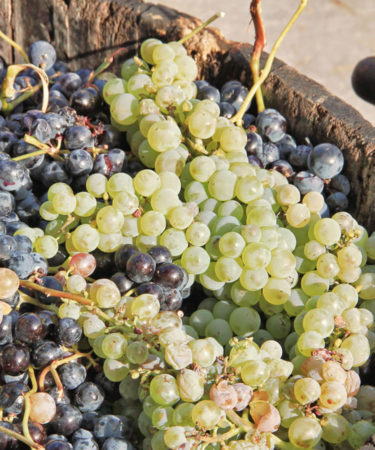Washington, Paso Robles, South Australia — despite having varying locations and topography, these New World wine regions all have something in common. All are billing themselves as the next big region to produce world-class Rhône blends.
Now, at first glance, this might seem a bit confusing. The Rhône Valley is an actual place, located along a river of the same name in France.
Rhône blends, however, are white or red wines made from grapes traditionally planted in the Rhône Valley. Along with Bordeaux blends, these are some of the most famous blended wines in the world. As with Bordeaux, Rhône grape varieties don’t have to be blended; but many are because many have a natural counterpart. If one grape variety lacks in acidity but spills over with body, the other will often do just the opposite.
Additionally, because the Rhône Valley, particularly in the south, is warm, most Rhône grapes can stand up to high temperatures. This allows Rhône blends to thrive in some of the world’s hottest wine regions.
A plethora of grapes are dubbed Rhône varieties — a whopping 18 are permitted in Châteauneuf-du-Pape alone — but some are more common than others.
White Grapes
Viognier
Of all the white Rhône grape varieties, Viognier is by far the most aromatic — and likely the most famous. Waxy, plump, and relatively low in acidity, it screams with ripe fruit and floral aromas like apricot, honeysuckle, and orange blossom. Top Viognier from Condrieu, a northern Rhône region known for its steep slopes and granite-based soils, can fetch remarkably high prices. Beyond its most famed iteration, Viognier is now found in the red northern Rhône blends of Côte Rôtie, white southern Rhône blends and varietal wines, and plenty of New World regions. California Viognier, which is often oaked, is common, as are versions from Virginia and Australia.
Marsanne and Roussanne
Marsanne and Roussanne are often inseparable in the Rhône Valley, used hand-in-hand to create balanced whites. In fact, the two grapes are thought to have a parent-child relationship, but it is unknown which grape brought forth the other. While both grapes are rich — most white Rhône grapes are, since they need to stand up to warm temperatures — Marsanne has more body, texture, and overall structure. Roussanne has more acidity and aromatic complexity. The grapes are found in in the blends of both the northern and southern Rhône, such as white or even red Hermitage, and may be seen as varietal wines or blends in areas like California and Australia.
Other White Grapes
While Viognier, Marsanne, and Roussanne are the only white grapes found in the northern Rhône, many more are found in the southern Rhône. Grenache Blanc, Clairette, Picpoul, and Bourboulenc are also considered Rhône grape varieties and could be used to create a white Rhône blend.
Red Grapes
Syrah
One of the two key red Rhône varieties, Syrah is king in the northern Rhône. (It is perhaps equally famous for producing bold, fruit-forward Australian wines under the name Shiraz.) Indicated by a telltale deep purple color, Syrah is driven by black fruit and unique, complex, savory notes of black pepper, olives, and cured meat, often with a pretty, floral brightness. It also has strong structural components, with prominent tannins, acidity, and body. While it isn’t uncommon to find Syrah in blends, it is most commonly bottled as a varietal wine, both in the northern Rhône and around the world.
Grenache
As Syrah is to northern Rhône, Grenache is to southern Rhône, where this hardy grape not only survives but thrives in the region’s sun-baked vineyards. That’s why Grenache is a no-brainer for winemakers in hot regions, such as Spain, Sardinia, California, and Australia. Though its pale red color might suggest a light wine, Grenache can be incredibly full-bodied and boozy, with characteristic red fruit flavors, plus wild herbs, sharp spices, and pink peppercorn. Because Grenache lacks acidity, it is commonly blended with other Rhône grape varieties, most famously in the heralded Châteauneuf-du-Pape. It is also useful for sweet wines, since the berries are prone to high sugar content.
Mourvèdre
While Grenache and Syrah are the true Rhône grape classics, Mourvèdre cannot be overlooked. As the “M” in “GSM blend”— a common abbreviation for blends of Grenache, Syrah, and Mourvèdre — the grape is known for its inky color, concentrated dark fruit, and full body. Think of it like a fruitier, plumper Syrah. Beyond the southern Rhône, Mourvèdre is prominent in the Provençal region of Bandol, as well as Spain, under the synonym Monastrell. More recently, Mourvèdre has garnered recognition as a standout grape in Texas, where it often exhibits distinct tang, in addition to classic notes.
Other Red Grapes
There are plenty of other red Rhône varieties, most of them found in southern Rhône blends. Carignan and Cinsault are two important ones, both known for producing earthy, red-fruited, sometimes rustic wines. The latter is generally much lighter than the former.
